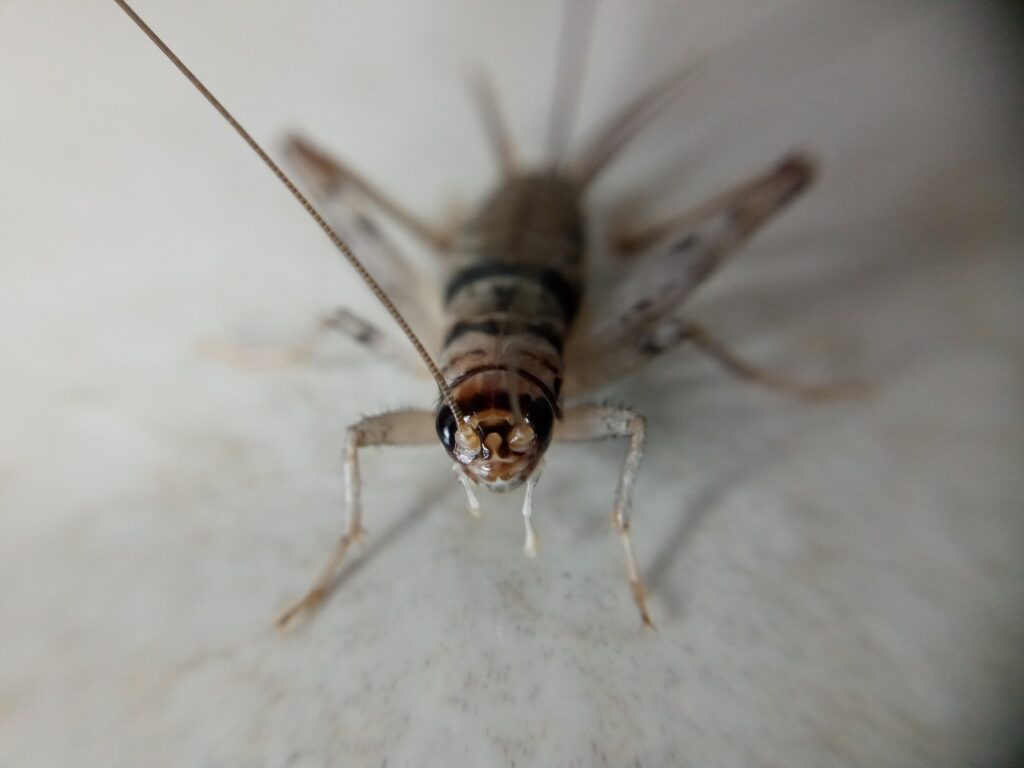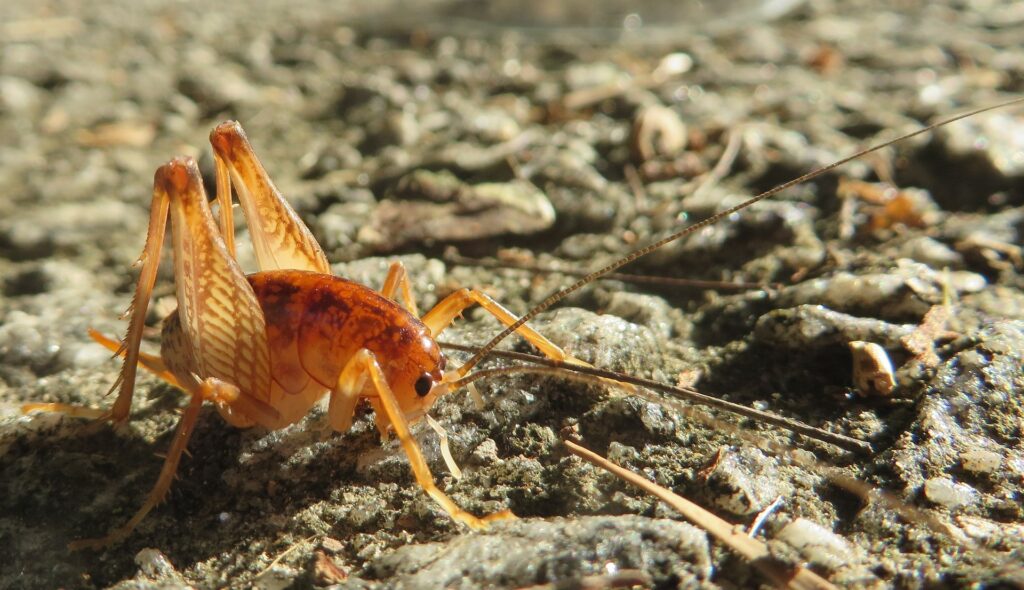Discover the different kinds of crickets that may infest your basement, the factors that draw them there, and efficient methods for getting rid of them. Learn how to shield your home from harm and stop cricket infestations.
Introduction
There’s a good chance you have crickets in your basement if you’ve ever heard them chirping. These tiny insects might initially seem harmless, but if they begin to reproduce, they can quickly start to cause problems. They not only make noise, but they can also harm paper and fabric. This article will look at the various kinds of crickets that are frequently discovered in basements, why they settle there, and most importantly, how to get rid of them. You can ensure that your basement is cricket-free and prevent any potential damage or discomfort brought on by these pests by following the advice given.
Signs of a Cricket Infestation in Your Basement
There are a few indications to look for if you think your basement may be infested with crickets. These consist of:
Chirping Sounds
The sound of chirping is among the most blatant indicators that your basement is infested with crickets. If you hear chirping sounds coming from your basement, it’s likely that you have crickets living there because male crickets make these sounds to attract mates.
Damage to Fabrics or Paper Products
Crickets frequently eat fabrics and paper products, which can harm these things. In your basement, any holes or other signs of wear and tear on clothes or paper products could be evidence of a cricket infestation. Near the damaged items, you might discover feces or exoskeletons that have shed their skin.
Dead Crickets
It’s a sure sign that you have an infestation if you start to see dead crickets in your basement. Given that crickets have a brief lifespan, it is likely that you have a sizable population of crickets living in your basement if you frequently discover dead crickets.
You can address the cricket infestation before it worsens by acting as soon as you become aware of these symptoms. This can involve killing the crickets with traps or insecticides, increasing ventilation to lessen moisture, and clearing clutter to get rid of potential food sources. Since cricket populations can multiply quickly and become challenging to manage, it is crucial to take action as soon as possible.
Types of Crickets Found in Basements
There are several different kinds of crickets that live in basements. House crickets, camel crickets, and field crickets are the three most prevalent varieties.
House Crickets

The most prevalent kind of cricket in homes, including basements, are house crickets. They can reach a length of 1 inch and are a light brown color. Basements are the perfect environment for house crickets to flourish because they are drawn to warmth and moisture. Their loud chirping noises, which they produce by rubbing their front wings together, are well-known. Due to their omnivorous nature, house crickets will consume almost anything, including paper goods, textiles, and even other insects.
Camel Crickets

Another typical type of cricket found in basements are camel crickets, also referred to as cave crickets or spider crickets. They have long, spindly legs that can get as long as 2 inches and are brown or tan in color. Dark, moist areas like basements, crawl spaces, and garages are attractive to camel crickets. Camel crickets don’t make chirping noises like house crickets do. Instead, they tap their hind legs on the ground to create a soft drumming sound. As omnivores, camel crickets will consume a wide range of materials, including textiles, paper goods, and even dead insects.
Field Crickets

Compared to house or camel crickets, field crickets are less likely to be found in basements, but they can still get inside. They typically have long wings and antennae and are black or brown in color. Because of their attraction to warmth and moisture, field crickets may live in basements. The loud chirping noises they make by rubbing their front wings together are another of their well-known characteristics. Because they are omnivores, field crickets will consume a wide range of things, including plants, insects, and even other crickets.
For the purpose of spotting infestations and treating them, it is crucial to comprehend the various varieties of crickets that can be found in basements. You can take the necessary actions to get rid of them and avoid further infestations by being aware of what to look for and understanding how to distinguish between the various types of crickets.
What Attracts Crickets in Basement
For a variety of reasons, basements draw crickets. You can take measures to avoid infestations by being aware of what draws them in the first place.
Moisture
Moisture is one of the main factors that draw crickets to basements. Because basements are frequently moist and humid environments, crickets need a certain amount of humidity to survive. This is particularly true if your basement leaks or is poorly ventilated. Crickets will be attracted to the moisture and can form a colony very quickly.
Darkness
Another reason why crickets are frequently found in basements is that they are drawn to dimly lit areas. Particularly if they don’t have windows or get natural light, basements are frequently dark spaces. In the absence of predators, crickets can hide in this darkness and procreate.
Warmth
Crickets are drawn to warmth as well as moist areas and darkness. Especially in the winter, basements are frequently warmer than the outside air. In order to stay warm and active, crickets will seek out warm areas like heating ducts or hot water pipes.
Food Sources
Finally, the presence of food sources in basements draws crickets there. Crickets can feed on a variety of materials, including paper goods, textiles, and dead insects, in basements. If your basement is cluttered, it can be the perfect place for crickets to find food and build a colony.
You can take measures to make your basement less alluring to these pests by learning what draws crickets to basements. This can be done by increasing ventilation to lessen moisture, adding windows or lighting to lessen darkness, caulking cracks and openings to reduce heat, and clearing clutter to lessen the amount of food sources that are readily available.
How to Get Rid of Crickets in Your Basement
There are several steps you can take to get rid of crickets if you have an infestation in your basement. Here are a few efficient strategies:
Reduce Moisture Levels
Considering that crickets prefer moist environments, lowering the moisture content in your basement is a crucial first step in getting rid of them. Dehumidifier use or better basement ventilation are two ways to achieve this. To get rid of potential breeding grounds, you should also fix any leaks or other sources of moisture in your basement.
Seal Entry Points
Small cracks and openings in your basement can let crickets in. Seal any entry points you find to stop this. In order to do this, gaps around pipes and other openings should be weatherstripped, gaps around windows and doors should be sealed, and foundation cracks should be filled.
Use Insecticides
Crickets can be killed by insecticides, but it’s crucial to use them properly and in accordance with label instructions. In your basement, you can get rid of crickets by using sprays, dusts, or baits. However, you might want to think about switching to natural remedies if you have pets or young children.
Call in a Professional
It might be best to contact a reputable pest control company if your basement has a sizable cricket infestation. They will be equipped with the knowledge and tools required to completely eradicate the cricket population in your basement. They can also offer suggestions for avoiding further infestations.
You can successfully get rid of crickets in your basement and avoid further infestations by following these steps. Keep in mind to act quickly because cricket populations can expand quickly and become challenging to manage.
Also Read: How to get Rid of Bees in Basement
FAQs
Some natural remedies include using diatomaceous earth, boric acid, or essential oils such as peppermint or lavender.
Yes, crickets can cause damage to fabrics, paper products, and even wood if the infestation is severe.
Seal any entry points such as cracks and gaps around doors and windows, and reduce moisture levels in your basement.
Crickets are not typically dangerous to humans, but they can carry diseases and trigger allergies in some individuals.
It’s possible that there may be residual crickets or another type of pest in your basement. Consider calling in a professional pest control company for assistance.
Conclusion
In conclusion, having crickets in your basement can be a pain, but you can effectively get rid of them if you have the right information and techniques. You can stop crickets from invading your home and causing damage by being aware of what draws them to basements, recognizing the symptoms of an infestation, and taking steps to lower moisture levels and seal entry points.
Also Read: How to keep Spiders Away from Your Basement
A cricket infestation can be successfully eliminated using insecticides and expert pest control services. However, it’s crucial to apply these techniques safely and in accordance with the directions on the label.
Check out our other Basement Savvy articles if you want to learn more about how to keep your basement healthy and pest-free. We go over a wide range of subjects, such as mold prevention, moisture control, and general maintenance advice. You can make sure that your basement stays a secure and cozy place for you and your family by paying attention to these suggestions and taking preventative action.

